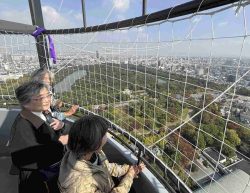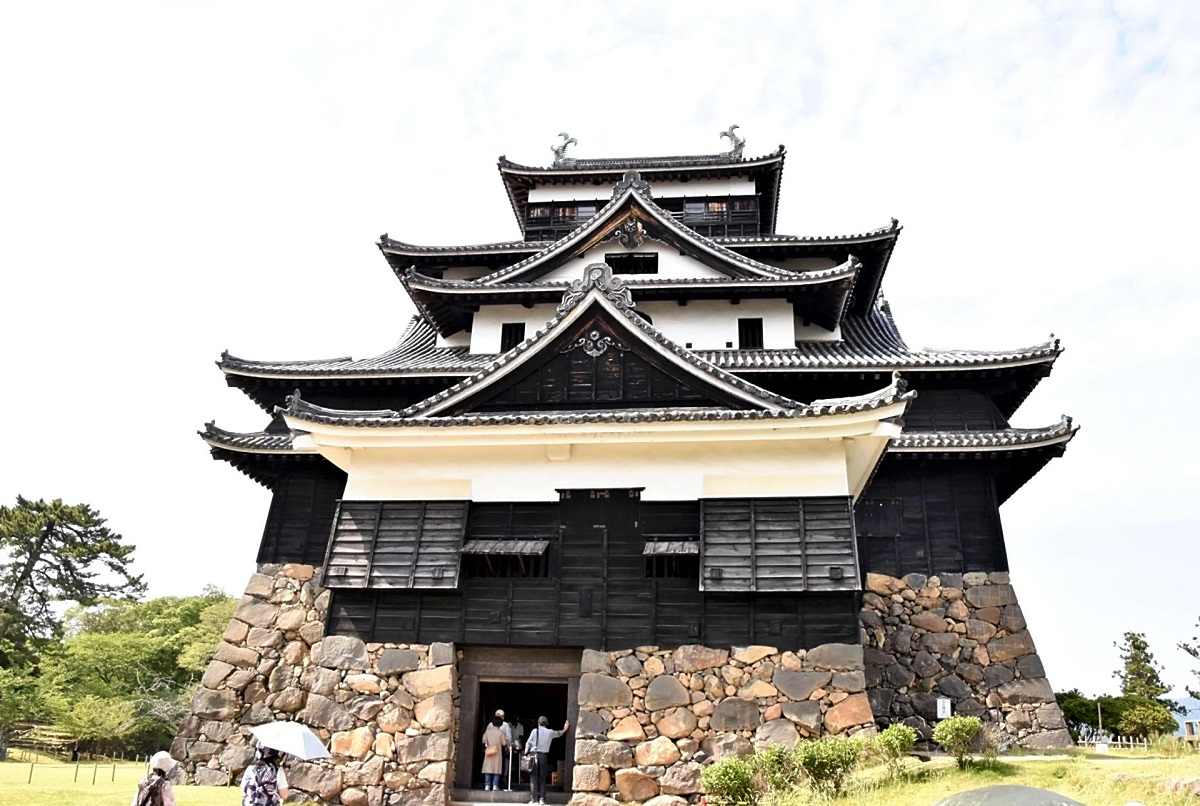
People enter the Matsue Castle keep from the tsuke-yagura, an annex built to protrude from the castle.
11:07 JST, July 29, 2023
MATSUE — Bon Odori summer festival dances, held at many places across Japan, do not take place very often in the former castle town area in Matsue. No one seems to know why for certain, no matter whom you ask.
Yet, there is one tragic tale, long passed down as if it were true, about a girl and the construction of Matsue Castle that offers a clue.
Writer Yakumo Koizumi, aka Lafcadio Hearn (1850-1904), heard about the story and introduced it in one of his writings, “Glimpses of Unfamiliar Japan” (1894), as follows:
“Nothing concerning her is remembered except that she was beautiful and very fond of dancing.”
The construction of Matsue Castle is said to have started in 1607 and finished in 1611.
According to Hearn’s book, the girl was apparently buried alive around this time as a sacrifice to the gods in a practice known as “hitobashira” (human pillar). This was allegedly an ancient tradition of offering a prayer for safety in the building of castles.

Subsequent to this, Hearn wrote: “Now after the castle had been built, it is said that a law had to be passed forbidding that any girl should dance in the streets of Matsue. For whenever any maiden danced, the hill Oshiroyama would shudder, and the great castle quiver from basement to summit.”
I did a bit of research and found that bans on dancing did happen from time to time in castle towns during the Edo period (1603-1867). However, I could not confirm whether there was any causal connection between the girl’s death and the ban on dancing. Hearn also introduced the story only as a legend.
Hair whorl well
Castles with a keep can be seen at many places of tourist interest across Japan. Yet there are only 12 castles in the country that have keeps built during the Edo period or earlier. Matsue Castle is one of them.
“In broad classification, there are three mysteries surrounding Matsue Castle, including the ‘human pillar’ legend Hearn wrote about in his book,” said Makoto Kinoshita, who works at the Matsue municipal government’s section on research of the castle’s historical source materials.
One of the two other mysteries involves a well, known as “Girigiri Ido” (hair whorl well). The word “girigiri” means hair whorl in a local dialect.
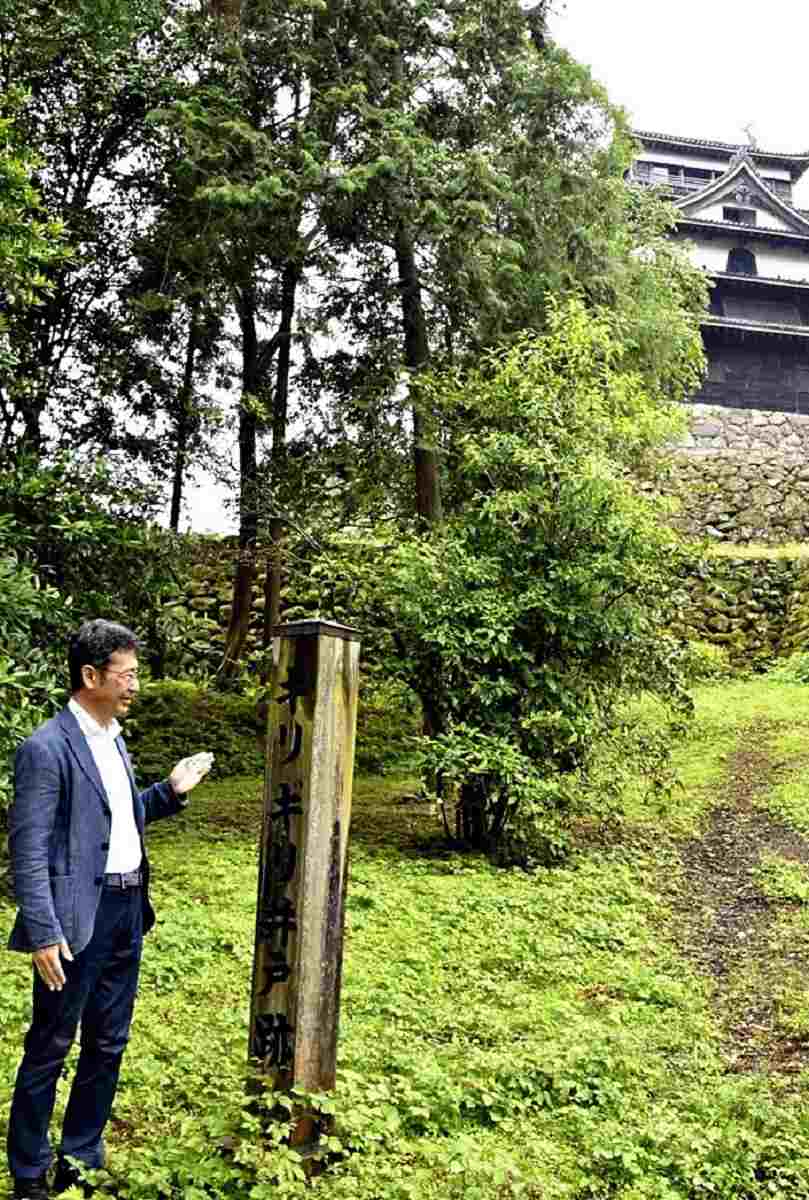
Bon Koizumi points at a sign post on the former site of the Girigiri Ido well in Matsue.
The legend describes laborers working on the honmaru palace during the construction of the castle. One stone wall kept on collapsing however many times the laborers piled up stones. They dug up the spot and found a skull pierced by a spear buried underneath. It is said the wall stopped collapsing after a service was held to put the owner of the skull to rest.
Then water sprang from the place where the skull was excavated, and the well gained the name Girigiri Ido. The wall collapses and the human skull buried underground reminded me of the “human pillar” practice.
The third and last mystery is said to have happened in 1638, when Matsudaira Naomasa, a grandson of Tokugawa Ieyasu, was the lord of the castle. When Naomasa ascended to the keep for the first time, a female ghost appeared and screamed, “This castle is mine!”
Upon hearing this, Naomasa made an offering of a fish called konoshiro — gizzard shad — in a watchtower in the castle because the fish’s name has the same pronunciation as “kono shiro,” which means “this castle” in Japanese. After that, the castle’s successive lords made offerings of konoshiro fish in the watchtower, which was located northeast of the keep.
Northeast is also called “kimon,” and is widely believed to be the direction from where demons come and go.
The watchtower came to be called “Konoshiro yagura,” but was described in records as a “kito yagura” (prayer tower). It did not survive to the present.
“For sure, the discovery of a skull and a spear is on record. But the rest is found only in books from the Edo period and writings by Hearn, so we can’t be sure if it is a historical fact,” Kinoshita said.
Ghost’s hand and foot prints
Matsue, where there is a strong connection with Hearn, is home to the Lafcadio Hearn Memorial Museum. The current director, Bon Koizumi, is a great-grandson of Hearn.
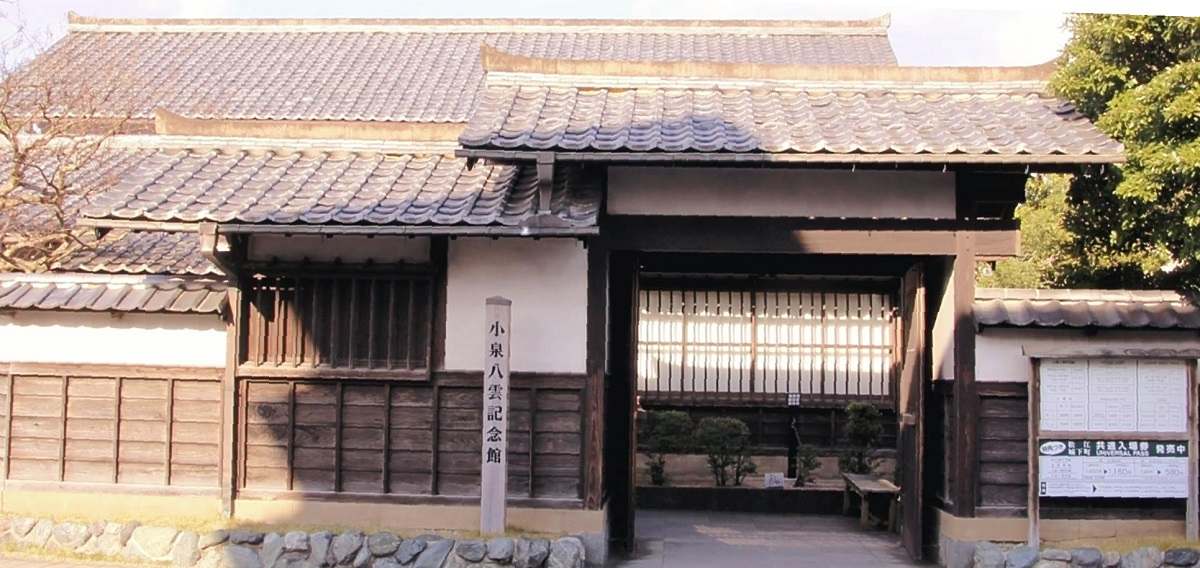
The Lafcadio Hearn Memorial Museum in Matsue
And Koizumi, 62, has something to say about the human sacrifice made for the castle.
“It shouldn’t be dismissed as a popular belief. People faced nature with awe and abided by taboos. We can probably regard it as an anecdote that vividly tells of the long-standing down-home quality of the people in Matsue,” he said.
Strange stories related to the castle are found all over the castle town as well. To the northeast of the castle, in the ominous kimon direction, there is a temple called Fumonin. A gate of the temple still bears marks that are believed to be the hand and footprints of a ghost.
Ghost sightings are also said to have been made on a bridge near the temple.
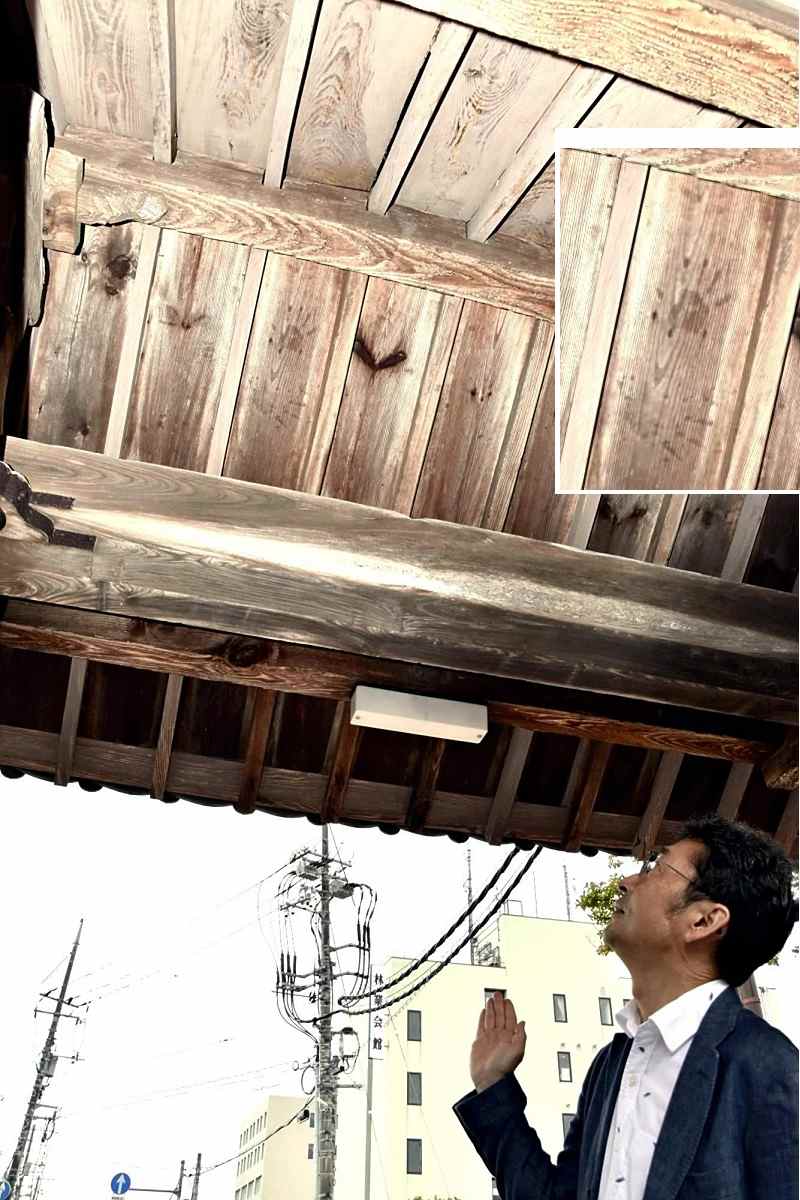
Koizumi looks up at the ceiling of a gate at the Fumonin temple, which bears what are believed to be hand and footprints of a ghost.
“Kaidan [“kwaidan,” in Hearn’s spelling] is a collective term for horror stories and mysteries related to supernatural phenomena. When these stories take root in a town, we can say that’s proof of the town being rich in history and culture,” Koizumi said.
"Features" POPULAR ARTICLE
-

Sanrio to Open Museum in Yamanashi Pref. Dedicated to Founder, Exhibits Include Hello Kitty, Other Characters
-

Autumn Foliage Surrounds Visitors to Tokyo’s Showa Kinen Park
-

My Daughter No Longer Speaks to Me, But I Want to See Her and My Grandchild
-

Kumamoto: Public Bath Refurbished as Library Where You Can Chat, Take Photos
-

Frozen Vegetables: Demand Rises for Convenient, Tasty Domestic Produce
JN ACCESS RANKING
-

Keidanren Chairman Yoshinobu Tsutsui Visits Kashiwazaki-Kariwa Nuclear Power Plant; Inspects New Emergency Safety System
-

Imports of Rare Earths from China Facing Delays, May Be Caused by Deterioration of Japan-China Relations
-

Tokyo Economic Security Forum to Hold Inaugural Meeting Amid Tense Global Environment
-

University of Tokyo Professor Discusses Japanese Economic Security in Interview Ahead of Forum
-

Japan Pulls out of Vietnam Nuclear Project, Complicating Hanoi’s Power Plans





